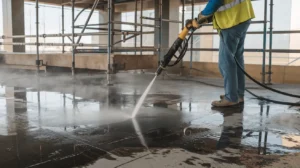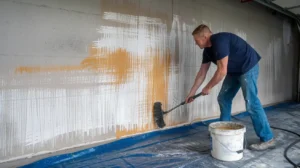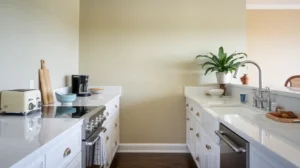How to Clean Concrete Floor | A Step-by-Step Guide for...
Read MoreWhat is Engineered Marble| Understanding its Composition and Benefits
What is engineered marble? Engineered marble, also known as cultured marble or synthetic marble, is a man-made alternative to natural marble. It is crafted by combining crushed marble stone with resins, pigments, and other additives to create a product that mimics the appearance and qualities of natural marble.
This material offers a more affordable and customizable option for various applications, ranging from countertops and flooring to bathroom fixtures and decorative elements.
Engineered marble provides consistent color, pattern, and durability, making it a popular choice in both residential and commercial construction and design projects.
What is Engineered Marble
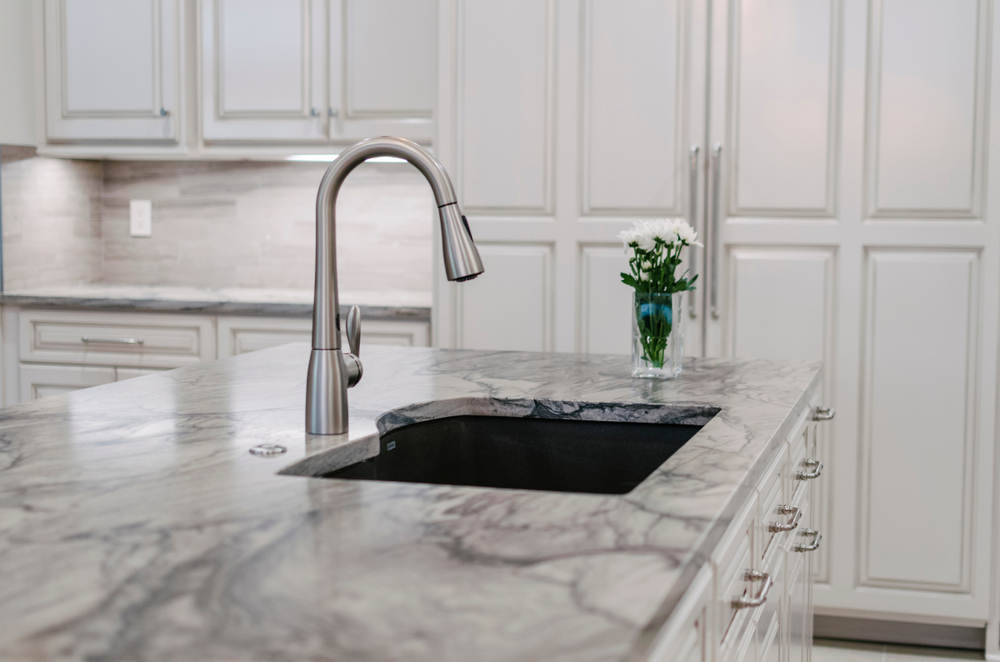
Appearance and Aesthetic Qualities:
Engineered marble is crafted to emulate the natural beauty of marble, offering a wide range of colors and patterns. It possesses a luxurious and elegant appearance, often with intricate veining and patterns that closely resemble natural marble. The surface finish can vary from polished to matte, providing options to suit different design preferences and styles.
Durability and Strength:
Engineered marble is engineered to be highly durable and resistant to scratches, stains, and heat. It is composed of a blend of marble dust, resins, and pigments, which are compressed under high pressure and cured to form a solid surface.
This manufacturing process enhances its strength and durability, making it less prone to chipping or cracking compared to natural marble. Engineered marble also offers consistent color and pattern throughout the material, ensuring long-term aesthetic appeal.
Versatility in Applications:
Due to its durability and aesthetic appeal, engineered marble is highly versatile and suitable for various applications in both residential and commercial settings. It can be used for countertops, vanities, flooring, wall cladding, shower surrounds, and fireplace surrounds.
Its versatility extends to both indoor and outdoor spaces, making it a popular choice for kitchens, bathrooms, lobbies, and exterior facades. Additionally, engineered marble can be customized to fit specific design requirements, such as custom shapes, sizes, and edge profiles, providing flexibility in design implementation.
Engineered Marble Vanity Tops
Definition and Description:
Engineered marble vanity tops are artificial surfaces composed of a mixture of natural marble stone particles and resin binders. This engineered material is designed to mimic the appearance and properties of natural marble while offering enhanced durability and versatility.
Engineered marble is often chosen for vanity tops due to its ability to withstand moisture, staining, and scratching better than traditional marble, making it an ideal choice for bathrooms and other high-traffic areas.
Design Options and Customization:
Engineered marble vanity tops come in a wide range of design options and customization possibilities. These tops can be manufactured to resemble various natural marble patterns, including Carrara, Calacatta, and Emperador, among others. Additionally, they can be tailored to fit specific dimensions and shapes to accommodate different vanity configurations and bathroom layouts.
Installation Process and Considerations:
The installation process for engineered marble vanity tops is similar to that of natural stone countertops but may require fewer specialized tools and techniques due to the material’s consistent composition. Here are some considerations for installation:
Preparation: Ensure that the vanity cabinet or support structure is sturdy and level before installing the vanity top. Any adjustments or repairs should be made beforehand to ensure a proper fit.
Measurement and Cutting: Accurate measurements of the vanity area should be taken to ensure the vanity top fits precisely. If necessary, the top may need to be cut to size using appropriate tools and techniques.
Sealing: While engineered marble is more resistant to staining and etching than natural marble, it may still benefit from sealing to enhance its protective properties. Follow manufacturer recommendations for sealing products and application methods.
Mounting: Once the vanity top is properly prepared and sealed, it can be mounted onto the vanity cabinet using adhesive or mounting brackets. Care should be taken to ensure the top is securely positioned and aligned correctly with any integrated sinks or backsplashes.
Finishing Touches: After installation, any seams or joints should be sealed to prevent water infiltration and maintain a seamless appearance. Clean the surface thoroughly to remove any dust or debris, and apply a final coat of sealant if necessary. If you want professional guidance then Stone Sealer Restoration is best in business.
Engineered Marble vs Cultured Marble
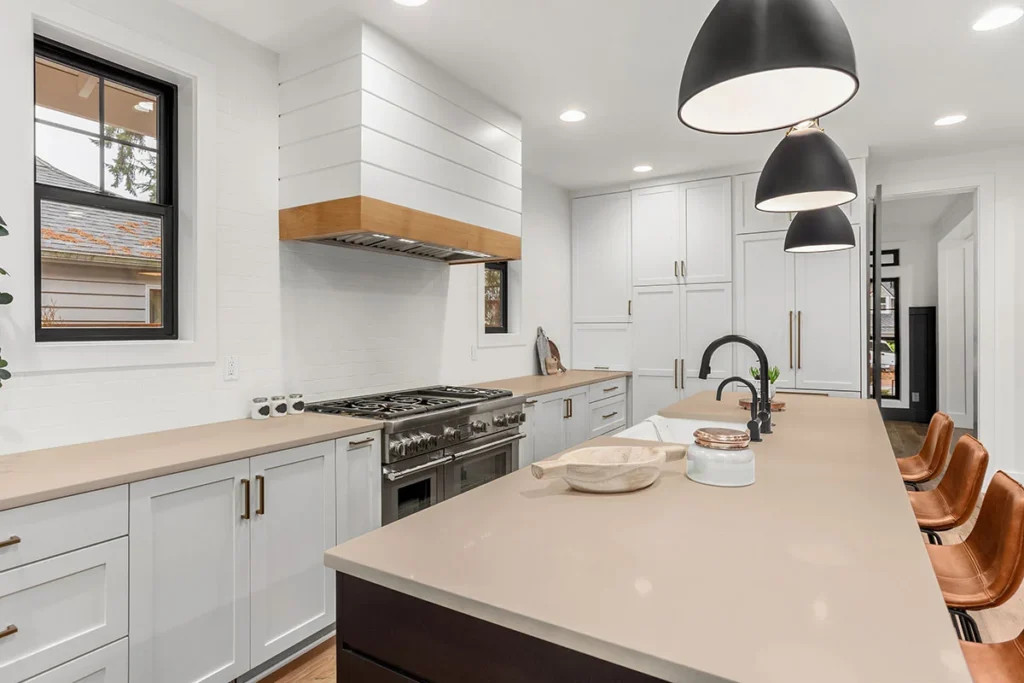
Definition and Differences:
Engineered Marble:
Engineered marble, also known as synthetic marble or cultured marble, is a man-made product composed of a blend of marble dust, polyester resins, pigments, and other additives. It is engineered to mimic the appearance of natural marble while offering improved durability and consistency in color and pattern.
Cultured Marble:
Cultured marble is a type of engineered marble that is specifically produced by pouring a mixture of polyester resin and marble dust into molds. It is then cured and polished to achieve a smooth and glossy finish. Cultured marble often includes a gel coat layer on the surface to enhance its durability and shine.
The main difference between engineered marble and cultured marble lies in their manufacturing processes. While both involve combining marble dust with resins, engineered marble may incorporate additional materials and techniques to achieve specific properties or aesthetic effects.
Comparative Analysis of Properties:
Appearance:
Engineered Marble: Offers a wide range of colors and patterns, often with veining that mimics natural marble. Can be customised to suit different design preferences.
Cultured Marble: Typically has a uniform appearance with consistent color and pattern. Veining and other variations may be limited compared to natural marble.
Durability:
Engineered Marble: Generally more durable than natural marble due to the resin binder, making it less prone to staining, chipping, or scratching.
Cultured Marble: Also durable, but may be slightly less resistant to wear and damage compared to engineered marble, especially if the gel coat layer is not properly maintained.
Maintenance:
Engineered Marble: Requires minimal maintenance, usually only needing regular cleaning with mild soap and water. Resistant to most household chemicals.
Cultured Marble: Similar to engineered marble in terms of maintenance requirements, although the gel coat layer may require occasional polishing to retain its shine.
Cost:
Engineered Marble: Typically more expensive than cultured marble due to its higher quality and customization options.
Cultured Marble: Generally more affordable than engineered marble, making it a popular choice for budget-conscious homeowners and projects.
Cost Considerations:
When considering cost, it’s essential to factor in not only the initial purchase price but also long-term maintenance and durability. While cultured marble may be cheaper upfront, engineered marble’s superior durability and resistance to wear and tear could result in lower overall costs over time.
Advantages And Disadvantages Of Engineered Marble
Advantages of Engineered Marble
Durability and Longevity: Engineered marble offers exceptional durability and longevity, making it resistant to chips, cracks, and other forms of damage commonly associated with natural stone.
Consistency in Color and Pattern: Unlike natural marble, engineered marble provides consistency in both color and pattern throughout the entire slab, ensuring a uniform appearance.
Ease of Maintenance: Engineered marble is relatively easy to maintain, requiring simple cleaning and occasional sealing to preserve its luster and protect against stains.
Disadvantages of Engineered Marble
Vulnerability to Heat and Scratches: Engineered marble is susceptible to damage from high heat and sharp objects, such as hot pans or knives, which can cause discoloration or scratches on its surface.
Susceptibility to Staining: Despite its resistance to many types of stains, engineered marble may still be prone to staining from certain acidic or oil-based substances if not promptly cleaned.
Cost Comparison with Natural Stone Options: While engineered marble is often more affordable than natural marble, it may still be more expensive than other natural stone options, posing a potential cost disadvantage for some consumers.
Conclusion
Engineered marble has emerged as a promising material in the construction industry, offering a blend of durability, versatility, and aesthetic appeal. Throughout this exploration, several key points have surfaced.
Engineered marble boasts superior strength and resilience compared to natural marble, making it an attractive choice for various applications such as countertops, flooring, and wall cladding.
Its customizable nature allows for a wide range of design possibilities, catering to diverse architectural styles and preferences. Feel free to contact us for any type of services or query like what is engineered marble.
FAQs
What Is Engineered Marble?
Engineered marble, also known as cultured marble or synthetic marble, is a man-made material composed of natural marble stone chips or dust mixed with resins and pigments. It is designed to mimic the appearance of natural marble while offering enhanced durability and versatility.
How Is Engineered Marble Made?
Engineered marble is produced by mixing crushed marble particles with resin binders and pigments. This mixture is then poured into molds and subjected to high pressure and heat to create solid slabs or tiles. After curing, the material is polished to achieve a glossy finish, resembling natural marble.
Is Engineered Marble Environmentally Friendly?
While the production of engineered marble involves the use of natural marble and synthetic resins, some manufacturers prioritize eco-friendly practices by incorporating recycled materials and minimizing waste during production. Additionally, the durability of engineered marble can contribute to longer lifespans, reducing the need for frequent replacements and environmental impact.
Where Can Engineered Marble Be Used?
Engineered marble is suitable for various applications, including countertops, vanity tops, flooring, wall cladding, and shower surrounds. Its versatility and durability make it a popular choice for residential and commercial projects alike.
How Do I Maintain Engineered Marble?
Cleaning engineered marble is relatively simple and typically involves using a mild detergent or stone cleaner with warm water and a soft cloth. Avoid abrasive cleaners or harsh chemicals that may damage the surface. Periodic sealing is generally not required, but it’s recommended to wipe up spills promptly to prevent staining.
Can Engineered Marble Be Repaired?
Minor scratches or chips in engineered marble can often be repaired using special epoxy or filler kits designed for stone surfaces. For more extensive damage, professional repair services may be required to restore the appearance of the material.
Our Services
Our Recent Post
Top 7 Popular Quartz Countertops Colors in 2024
Top 7 Popular Quartz Countertops Colors in 2024 Quartz countertops...
Read MoreHow to Clean a Granite Composite Sink | Simple Steps for a Spotless Finish
How to Clean a Granite Composite Sink | Simple Steps...
Read More
